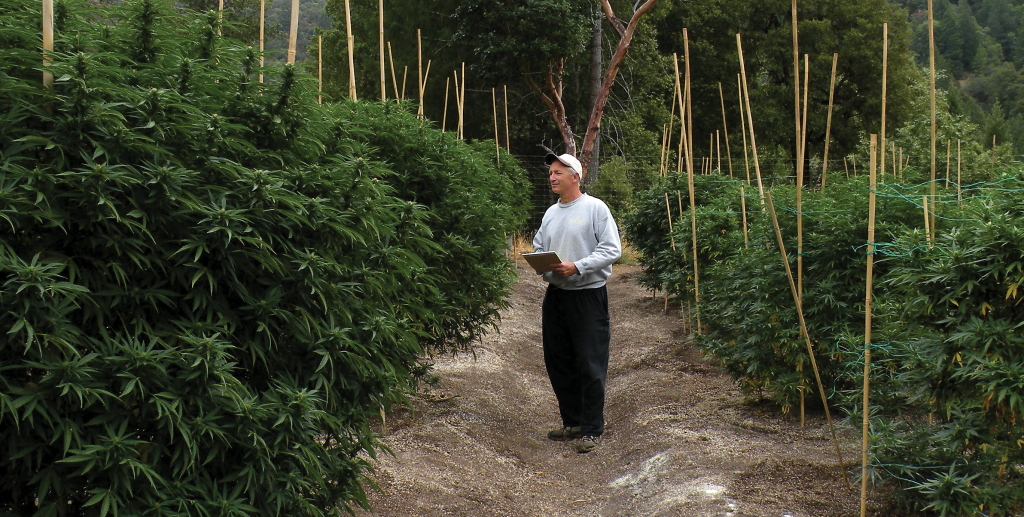By Jessica Arnold & Garrett Rudolph
Consumers are readily becoming more and more conscious of what they put in their bodies. The organic movement can be seen not just in all facets of the food industry, but also natural fibers, such as cotton, and a variety of health and beauty products.
People want to know what chemicals were used in growing their produce. They want to know if their beef were injected with growth-promoting hormones.
In a certain regard, cannabis is no different.
Consumers are increasingly interested in how and where their marijuana was grown. They want to know if pesticides were used and if the growers are responsible farmers. As cannabis transitions from the black market to the mainstream, these questions become even more common and important.
However, cannabis growers can’t just slap the “organic” label on their product.
In order to be deemed Organic, products must go through a certification process from the United States Department of Agriculture’s National Organic Program, which promotes sustainable methods and materials. Because even state-sanctioned marijuana remains illegal according to the federal government, it cannot be labeled Organic.
That’s where Clean Green Certified comes in.
Chris Van Hook, a licensed attorney with more than 40 years of experience in agriculture, began inspecting cannabis crops in 2003 after a medical grower wanted a crop certified as Organic.
At the time, Van Hook was already accredited by the USDA to certify Organic operations through his company Global Culture LLC — currently one of just 84 accredited organizations in the world, he said.
However, in 2004, the USDA issued a decree that marijuana was not eligible for USDA Organic certification because it was not a federally-recognized agricultural crop, Van Hook said.
“At that point, the industry kept asking: ‘Can’t you do something?’” he said.
That was when he officially began the Clean Green Certified (www.cleangreencert.com) program.
Clean Green is a third-party inspection program that was created in response to conscientious marijuana growers and distributers wanting to stand out from the crowd. For Van Hook, that means bringing standard practices into an industry that has been unregulated and underground for decades. In some cases, that has meant a higher potential for unsafe pesticides, dirty processing rooms and other health hazards that would be flagged in other industries.
“The guy smoking cigarettes with two Rottweilers on the sofa while he was trimming his bud didn’t pass,” Van Hook said.
Retailers and consumers who care about Organic-equivalent farming practices can look for cannabis that features the Clean Green logo. The certification also ensures growers will be prepared to meet USDA Organic standards once cannabis becomes federally legal.
“The people that call to get Clean Green Certified are really the cannabis farmers that realize we’re moving toward legalization, we’re moving toward regulation, and they want to get started on that program,” Van Hook said.
With a qualified third-party certification program, medical and recreational marijuana consumers have a greater confidence that their favorite products were grown, processed, handled, stored, transported, packaged, labeled and distributed using standards and procedures based on national and international guidelines for organic, sustainable farming and food handling. Industry professionals can also rest assured that Van Hook doesn’t have ulterior motive when he does certification inspections. Clean Green Certified is the only thing he does in the cannabis industry.
“I don’t broker, I don’t buy and sell, I don’t have a dispensary,” he said.
Cannabis can be Clean Green Certified regardless of whether it’s grown indoors, outdoors or in a greenhouse. As a condition of continued certification, all growers and handlers must have carbon footprint reduction programs in place and those programs must improve each year. Marijuana growers who cultivate their crops indoors under artificial light may either purchase renewable energy (such as solar, wind or hydroelectric power) or install solar panels to reduce their footprint.
Water usage is also analyzed, Van Hook said.
“Do you have a legal water supply, and are you implementing water-saving techniques within your growing system?” he said.
Van Hook also follows procedures to ensure confidentiality of information provided for certification, which features a three-part program composed of legal compliance, growing methods and crop inspection.
Annual on-site visits are conducted where state and local regulations are reviewed by Clean Green representatives and clients. At each grow site, plants are carefully inspected under magnifying lenses; soil samples are collected and sent to a licensed testing laboratory; harvest practices and records are evaluated, and all agricultural inputs are reviewed. At dispensaries and retail stores, methods for tracking products from the field to final point of sale are assessed.
Jessica Arnold is a process engineer and journalist who did her master’s thesis work on energy use and environmental impacts of cannabis cultivation. She can be reached at jarnold@humboldt.edu.



